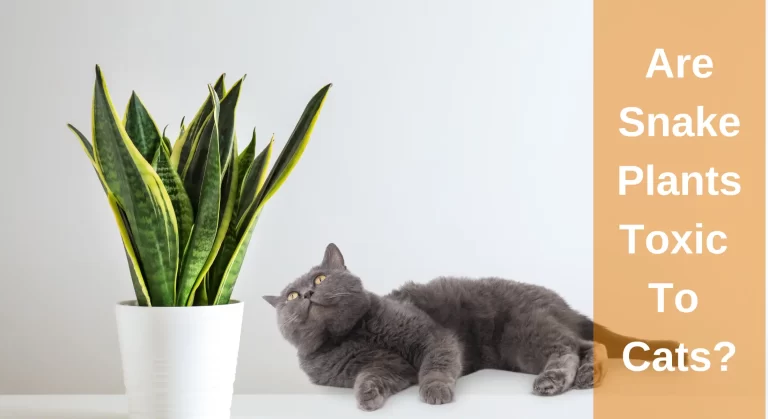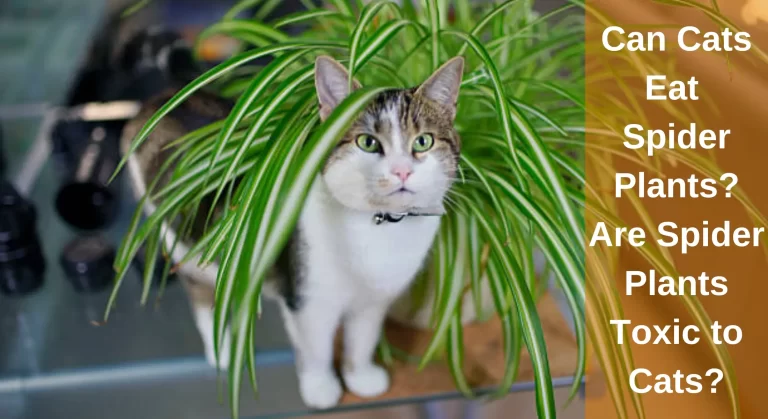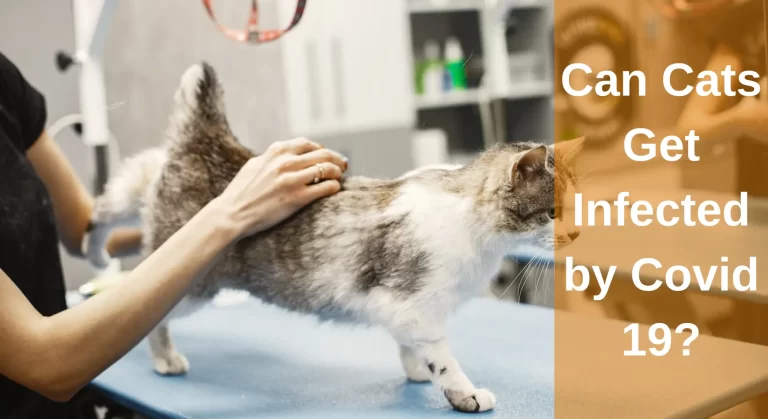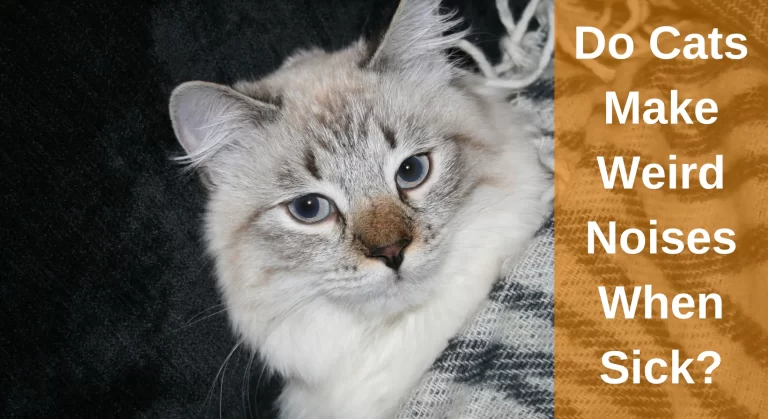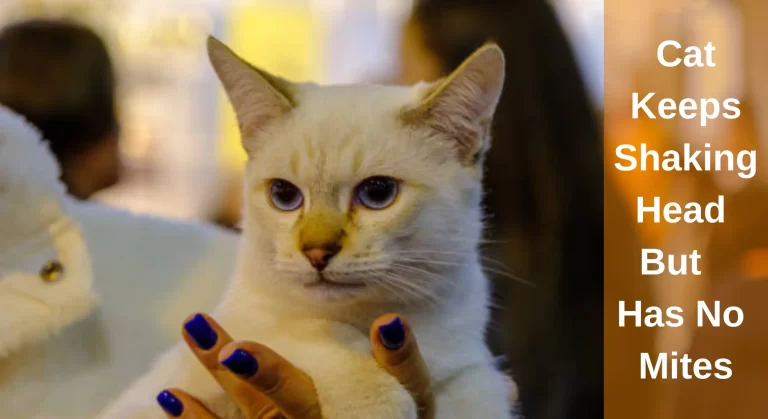Cat Ate Oxygen Absorber: The Dangers of Iron Oxygen Absorbers for Cats
Iron oxygen adsorbent packets aid in keeping foodstuff dry and are commonly perceived to be non-toxic, but there’s a specific type you must watch out for. As you know these packets are shiny, they may attract your cat. Cats are known for their curious nature and sometimes get themselves into unexpected situations. If you find yourself in the unfortunate circumstance of discovering that your cat ate oxygen absorber, it’s important to take immediate action
If your cat has ingested an iron oxygen absorber, it is essential to seek immediate veterinary attention. Ingestion of an iron oxygen absorber can lead to intestinal obstructions or other complications. Even a small amount can make them throw up and it might have blood in it. Prompt professional evaluation and treatment are necessary to ensure your cat’s well-being.
Do you worry that your cat will become sick due to the oxygen adsorbent? In this article, we will explore the risks associated with a cat ingesting an iron oxygen absorber, the signs, and symptoms to watch for, steps to take in the immediate aftermath, and the necessary veterinary evaluation and treatment. Additionally, we’ll provide preventive measures to avoid such incidents in the future.

What are Iron Oxygen Absorbers?
Iron oxygen absorbers are small packets or sachets containing iron powder and a salt-based activator. They are commonly used in food packaging, pharmaceuticals, and even in dog treats and other products to extend shelf life by reducing the presence of oxygen. When exposed to air, the iron in these packets oxidizes, creating rust. This chemical reaction helps remove oxygen from the environment, thus inhibiting the growth of spoilage-causing organisms.
The ‘must not ingest’ cautions are written all over these tiny white rectangular packages, and when you rip them apart, you normally find a dark red powder within.
Passing a magnet across it will instantly reveal that the powder is iron. In addition to the iron, other additional chemicals may be included (based on the seller) to assist in absorbing oxygen and preserving the ingredients.
Check Out: Cat Ate a Birth Control Pill What Should I Do?
Immediate Steps to Take If Your Cat Ate an Oxygen Absorber
When you discover that your cat has ingested an iron oxygen absorber, taking immediate action is crucial. Here are some steps to follow:
- Contact your veterinarian: Inform your veterinarian about the situation and follow their guidance. They will provide specific instructions based on your cat’s condition.
- Do Not Induce Vomiting: Unlike some other foreign objects, inducing vomiting in cats that have ingested an oxygen absorber is not recommended. The packet’s material can potentially become lodged in the throat, causing further complications. It’s best to let a professional handle the situation.
- Remove any Remaining Absorbers: If there are other iron oxygen absorbers within reach, remove them from your cat’s vicinity to prevent further ingestion.
- Monitor Your Cat’s Symptoms: While waiting for veterinary assistance, closely monitor your cat’s symptoms. Note any changes in behavior, appetite, or breathing patterns. This information will be valuable when communicating with the veterinarian.
Also, Check Out: My Cat Ate a Feather: What Happens When a Cat Devours a Feather
Risks Associated with Cats Ingesting Iron Oxygen Absorbers
When a cat ingests an oxygen absorber, several risks arise. The primary concern is gastrointestinal blockage or obstruction, as the packet material can become lodged in the digestive tract. The iron powder inside the absorber can also lead to iron poisoning, which is toxic to cats. The severity of the symptoms depends on the size of the absorber ingested and the cat’s overall health.
Also Read: My Cat Ate a Dryer Sheet: What to Do Now
Symptoms of Iron Oxygen Absorbers Ingestion in Cats
If your cat consumes iron oxygen absorbent, you might observe the following signs:
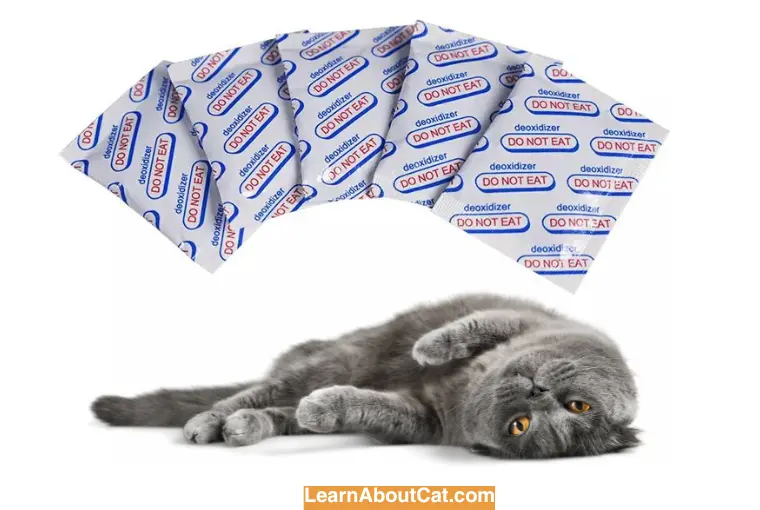
Gastrointestinal Distress
One of the most common signs of oxygen absorber ingestion in cats is gastrointestinal distress. This may include vomiting, diarrhea, or a loss of appetite. You may notice your cat’s abdomen becoming tender or swollen, indicating a potential blockage.
Difficulty Breathing
If the oxygen absorber causes an obstruction in the cat’s airway, it can lead to difficulty breathing. Rapid, shallow breaths or wheezing are clear signs that your cat is experiencing respiratory distress and requires immediate attention.
Lethargy and Weakness
Cats who have ingested an oxygen absorber may exhibit lethargy, weakness, or a lack of energy. They may seem disinterested in their surroundings and have trouble moving around normally. These symptoms can be an indication of internal complications and should not be ignored.
Some Other Common Symptoms Include:
- Puking containing blood
- Excess salivation
- Stomach pain
- Pale gums
- Fainting
- Shock
Your cat can develop respiratory acidosis and hepatotoxicity if neglected. (This could manifest up to five days following consumption.) If a few rare exceptions go ignored, organ damage could happen.
Call the doctor immediately if you observe the following signs in your cat. There is a crisis here. Tell the doctor how many granules or portions of the sachet your cat has consumed. And be sure to let the vet know what time it occurred.
The great news is that felines who seek immediate medical attention have the greatest possibility of fully recovering.
Find Out: My Cat Ate Plastic Wrapper: What Should I Do [Answered]
Treatment Options for Iron Oxygen Absorber Ingestion in Cats
Treatment for iron oxygen absorber ingestion in cats will depend on the severity of the poisoning. Your veterinarian may recommend the following:
- Activated Charcoal Administration: Upon examination, your veterinarian may choose to administer activated charcoal to help absorb any toxins present in your cat’s digestive system. This can help prevent further absorption of harmful substances.
- Fluid Therapy: Fluid therapy might be necessary to keep your cat hydrated and support their overall health during the recovery process. Intravenous fluids may be administered to maintain hydration levels and flush out any toxins.
- Chelation Therapy: In severe cases, your veterinarian may use chelation therapy, a process that involves the administration of medications to bind and remove iron from the body.
- Symptomatic Treatment: Your veterinarian may recommend additional supportive care, such as anti-nausea drugs, gastric protectants, anti-inflammatory medication, or pain management, to alleviate discomfort and promote healing. Follow their instructions closely to ensure your cat’s speedy recovery.
Interesting Reading: My Cat Ate a Whole Bag of Treats: What Should I Do? [Answered]
How Poisonous are Oxygen Absorbers?
Iron dust, silica, and charcoal are the substances that are used in the formation of oxygen-absorbing packs. If these packets are ingested accidentally the iron might be utilized by your system similar to a multivitamin supplement and isn’t harmful. However, taking in a lot of iron may make a human being or pet sick.
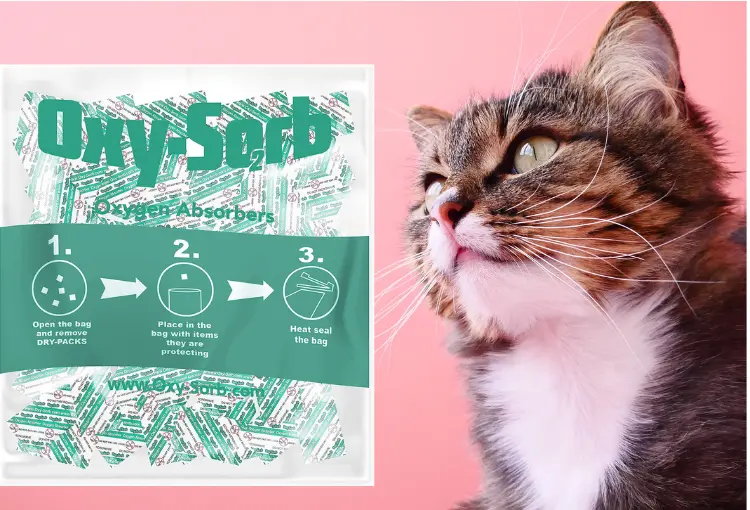
According to experts, signs of poisoning don’t appear until you consume above 10 milligrams of iron per kilogram of body mass. So, even a young child or pet has to consume multiple packets in order to experience any toxicity effects. But If any of these situations occur, get immediate medical help.
Because of the destructive action of iron and the other compounds in oxygen absorbent, they may pose a toxicity danger to your cat’s digestive system. You might be able to identify the company if the package is still completely intact and immediately Google it to verify.
Although some packets are non-toxic, the majority of oxygen absorbents should be regarded as dangerous and must be tested at the veterinarian’s office immediately.
Relevant, Read: My Cat Ate A Quarter: What to Do Now [Answered]
Are Oxygen Absorber Packets Toxic to Cats?
Sadly, iron-containing oxygen absorbents are poisonous to cats and may lead to iron toxicity. The particles within the iron oxygen absorbent pack may leak out when the pack is damaged. The particles may upset the cat’s gastrointestinal system and damage the tissues there if the cat consumes them.
Even though severe toxicity is uncommon, the nature of the symptoms depends on your cat’s body weight, how much was consumed, and the percentage of iron grains in every packet. Excessive drooling, lack of appetite, nausea that may include blood, and stomach pain are some of the early symptoms of poisoning. Cats that have been poisoned may seem to get well, but they eventually develop chronic multi-organ dysfunction, that may be fatal.
Silica gel is also present in oxygen absorbers and these tiny plastic pellets cause your cat to urinate frequently or have diarrhea.
How Do I know it Was an Iron Oxygen Absorber?
If your feline didn’t consume it completely, the simplest approach to test is usually to empty what is still in the packet. If not “spent,” where in the situation the powder becomes a rigid lump within the pack, in normal cases, iron oxygen absorbent packets contain reddish-brown granules.
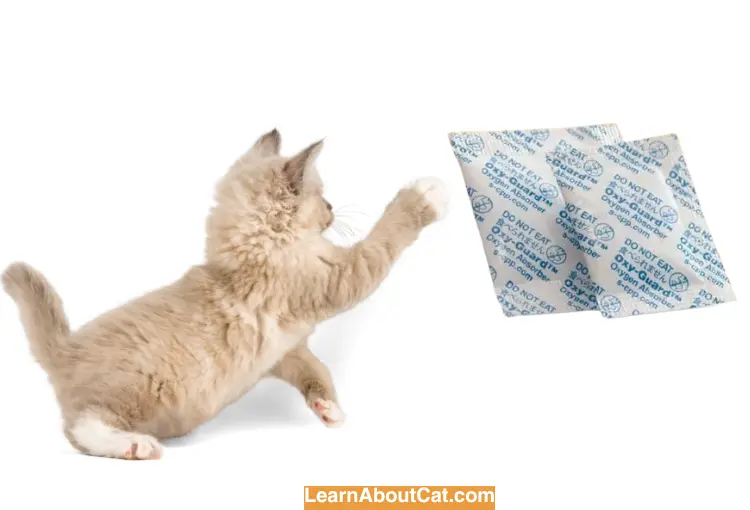
Simply run a magnet through the package or the powder that has been emptied to see if it contains iron. If it persists, there is iron present. You should take your cat right away to the veterinarian to ensure that the iron can be treated before it causes problems.
Although if your cat appears to be healthy, it’s advisable to be a bit of worry because the consequences can occasionally take a maximum of five days to manifest. Its destructive effects might be best understood by contrasting it to a “slow acid,” therefore you need to dispose of your cat before it gets a chance to cause significant harm.
What Happens If You Eat the Oxygen Absorber in Beef Jerky?
Oxygen absorber packets may contain various concentrations of iron powder and are frequently used to protect dry foods such as beef jerky. But these oxygen absorbers can cause iron toxicity.
Gastrointestinal symptoms such as nausea, diarrhea, anxiety, and an inability to eat are indicators of iron poisoning. After the wound heals, the inflammation may result in blisters and scars. You should visit the emergency clinic immediately to control the toxicity, while minor cases can often be treated at home.
Explore: My Cat Ate Chocolate Muffin Wrapper: What Should I Do?
When Should You Not Use Oxygen Absorbers?
In order to increase the product’s lifespan by eliminating oxygen from the packing atmosphere, oxygen absorbents are frequently employed in packaged food. Yet there are some circumstances in which oxygen absorbers shouldn’t be employed:
- Fruits and veggies that are fresh don’t need oxygen absorbent since they need oxygen to stay fresh.
- Oxygen absorbents will make baked items go bad or destroy their texture.
- Moisturized pet meals and meat can become spoiled and moldy as a result of oxygen absorbents.
- Items that have been sealed do not require oxygen absorbent.
- The essential oil found in items such as spices and aromatic plants doesn’t require oxygen absorbers as it changes the flavor and scent of the item.
Other Common Desiccants and Their Effects on Cats Upon Ingestion
Desiccants are substances used to absorb moisture and maintain dry conditions. Besides oxygen absorbers, there are other common desiccants you should be aware of.
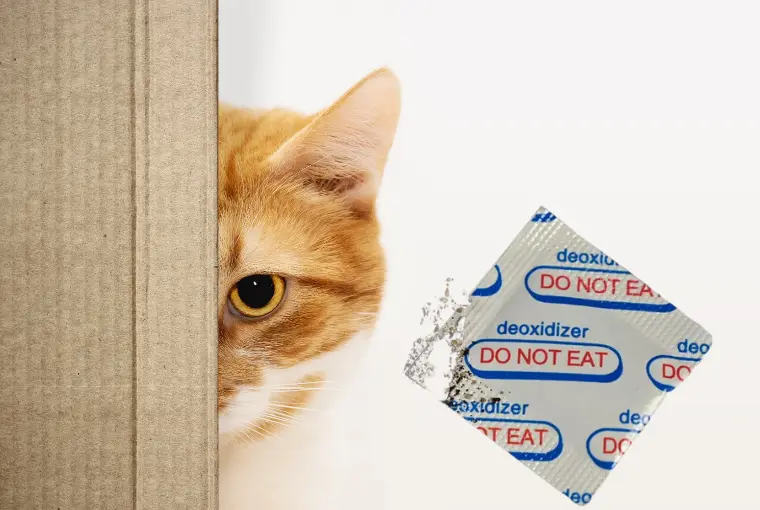
Silica Gel
Silica gel is one of the most commonly used desiccants, is generally considered non-toxic to cats. However, it is not intended for consumption and can still cause gastrointestinal discomfort if ingested in large amounts. If a cat consumes silica gel, it is recommended to monitor their behavior and contact a veterinarian if any concerning symptoms arise.
Molecular Sieves
Molecular sieves are synthetic desiccants used in various industrial applications. If a cat ingests molecular sieves, it can cause gastrointestinal blockage or irritation. Symptoms may include vomiting, diarrhea, loss of appetite, and abdominal discomfort. Immediate veterinary attention is necessary if ingestion is suspected.
Calcium Chloride
Calcium chloride is a highly hygroscopic desiccant known for its ability to absorb moisture. Ingestion of calcium chloride can be harmful to cats and may result in gastrointestinal irritation or blockage. Symptoms may include vomiting, diarrhea, drooling, and abdominal pain. Contact a veterinarian promptly if calcium chloride ingestion is suspected.
Bentonite Clay
Bentonite clay is a natural desiccant commonly used in cat litter products. While it is generally safe for cats to use litter containing bentonite clay, ingestion of a significant amount can cause gastrointestinal distress. If a cat consumes bentonite clay, monitor their behavior and contact a veterinarian if any concerning symptoms occur.
Also, Find Out: My Cat Ate Insulation: What To Do Now
Preventing Oxygen Absorber Ingestion in Cats
Prevention is key when it comes to keeping our cats safe. Here are some measures to prevent iron oxygen absorber ingestion:
- Secure packaging: Store products containing iron oxygen absorbers in secure containers or cabinets that are inaccessible to cats.
- Check to package: Inspect food packaging and other products before use, ensuring that there are no damaged or open iron oxygen absorber packets.
- Dispose of properly: When discarding packaging, ensure the iron oxygen absorbers are safely removed and disposed of in a manner that prevents access by pets.
Frequently Asked Questions
Can a small amount of iron powder harm my cat?
Yes, even a small amount of iron powder from an oxygen absorber can be toxic to cats. Their bodies cannot efficiently process iron, leading to potentially severe consequences.
What if my cat shows no symptoms after ingesting an iron oxygen absorber?
Even if your cat appears fine initially, it is still essential to contact a veterinarian. Some symptoms may not manifest immediately, and a professional evaluation is necessary to ensure your cat’s well-being.
Are all oxygen absorbers equally dangerous for cats?
No, they are not. Oxygen absorbers containing elemental iron pose the greatest danger, capable of inducing iron poisoning. Conversely, absorbers lacking elemental iron do not present as high risk, though the ingestion of large quantities can still yield certain complications. Typically housing silica gel or charcoal, these packets are commonly found in newly acquired footwear, handbags, and backpacks. In the event that your feline companion consumes one of these packets, it may exhibit symptoms such as vomiting, diarrhea, or constipation.
Are there any long-term effects of a cat ingesting an oxygen absorber?
The long-term effects of a cat ingesting an oxygen absorber remain uncertain due to the lack of extensive studies on the subject. Nevertheless, it is plausible that such ingestion could result in liver damage, kidney damage, or even mortality.
Can a cat pass an iron oxygen absorber naturally?
Unfortunately, the answer is no. Ingestion of such an absorber prevents safe passage through the digestive system. Instead, the iron content is absorbed into the cat’s bloodstream, leading to the potential development of iron poisoning. This condition can have severe consequences, emphasizing the criticality of seeking immediate veterinary assistance.
How long does it take for symptoms to appear after ingestion?
After a cat ingests an iron oxygen absorber, symptoms can vary, but they usually appear within a few hours to a day (0.5 to 6 hours after ingestion). It’s important to monitor the cat closely during this time and seek veterinary attention if any signs of illness or discomfort arise.
What happens if your cat eats a silica packet?
Not exactly, as silica gel is considered non-toxic to cats. However, it can induce mild gastrointestinal upset upon ingestion. Most cases of silica gel ingestion present with mild symptoms that resolve spontaneously. Nevertheless, significant consumption of silica gel may result in the development of intestinal obstruction, a grave condition demanding urgent veterinary intervention.
In case of suspicion regarding your cat’s ingestion of a silica gel package, remain observant for any signs of illness or discomfort.
Final Words
Iron oxygen absorbent must be regarded as extremely hazardous for your cat and even for humans as well. However, humans are aware of toxic things but cats aren’t so if they consume one, you must seek immediate medical attention.
Even though the consequences might not appear immediately, you shouldn’t risk anything because prompt veterinary care will prevent this poisoning from further spreading.
Also, you can easily check whether the oxygen absorber contains iron or not by moving a magnet over it.
Who is Isabella?
My name is Isabella, and I am a dedicated and knowledgeable cat enthusiast. With years of experience caring for cats and a deep love for felines, I made a mission to help other cat lovers navigate the challenges of cat ownership.

